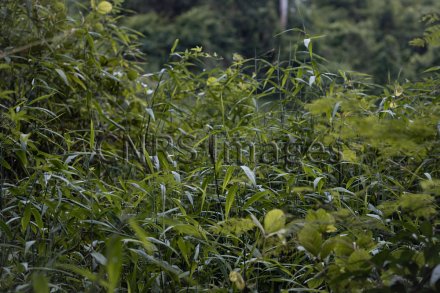Production year
2023

© Thibault COCAIGN / LEESIA / CNRS Images
20240039_0027
Vue rapprochée d’une cambrouze en Guyane française. Les cambrouzes sont des formations végétales dominées par une grande densité de bambous. Difficiles d’accès, elles forment au sein de la forêt des “îlots” à part entière. Cet habitat a été photographié à proximité de la station de recherche des Nouragues. La station est située au cœur de la Réserve naturelle nationale des Nouragues, qui protège un espace de 105 800 ha de forêt tropicale. Loin d’offrir un paysage homogène, cet environnement préservé présente une riche diversité de reliefs et d’habitats. L’inselberg des montagnes Balenfois offre un relief particulièrement remarquable par son aspect de colline rocheuse isolée. Tout autour, une forêt tropicale diversifiée s’accompagne de mosaïques d’habitats (savane-roche, forêt de lianes, cambrouzes…). Enfin, le réseau hydrographique offre une riche diversité d'habitats aquatiques, allant des sillonneuses criques forestières aux bruyants sauts rocheux.
The use of media visible on the CNRS Images Platform can be granted on request. Any reproduction or representation is forbidden without prior authorization from CNRS Images (except for resources under Creative Commons license).
No modification of an image may be made without the prior consent of CNRS Images.
No use of an image for advertising purposes or distribution to a third party may be made without the prior agreement of CNRS Images.
For more information, please consult our general conditions
2023
Our work is guided by the way scientists question the world around them and we translate their research into images to help people to understand the world better and to awaken their curiosity and wonderment.